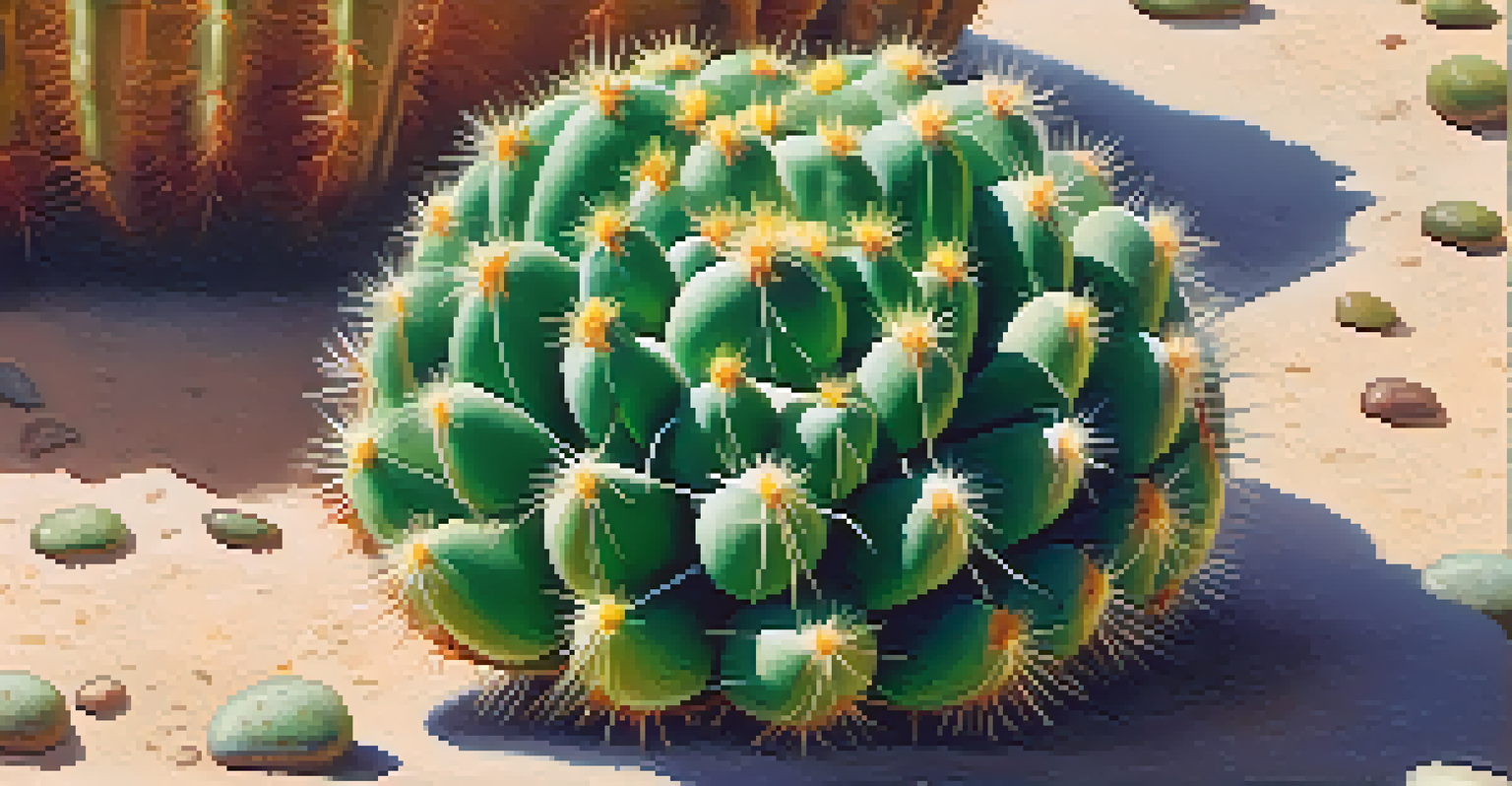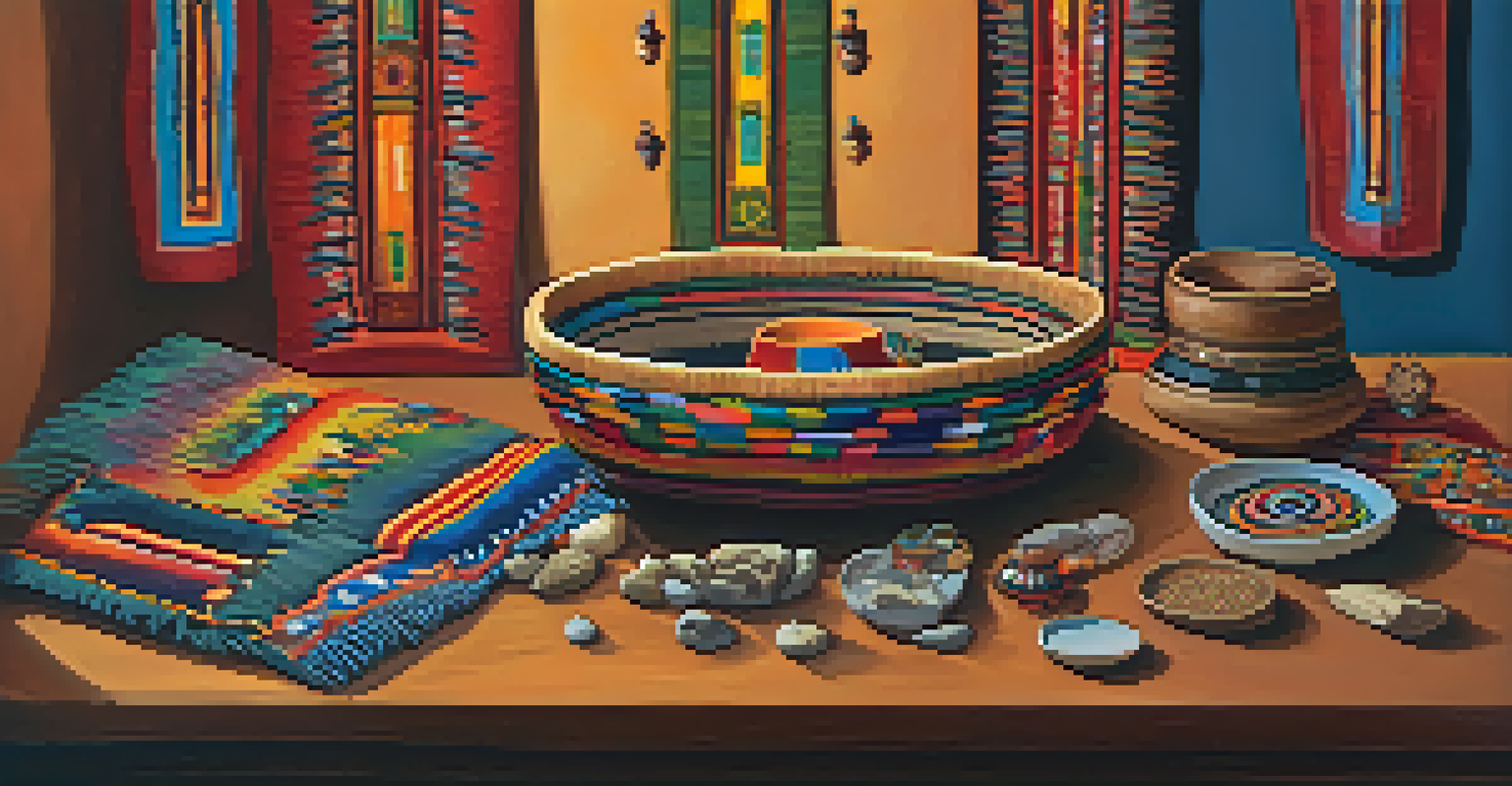Comparative Analysis: Peyote and Other Entheogens Today

Understanding Peyote: A Historical Perspective
Peyote, a small cactus native to Mexico and the southwestern United States, has been used for thousands of years in various spiritual practices. Traditionally, Indigenous peoples utilized peyote in ceremonies to connect with the divine and gain insights. Its psychoactive compound, mescaline, induces altered states of consciousness, making it a significant entheogen in spiritual contexts.
Psychedelics have the potential to unlock profound aspects of the human psyche and facilitate healing, but we must approach them with respect and understanding of their cultural roots.
The historical significance of peyote cannot be overstated; it played a crucial role in the development of Native American Church practices in the early 20th century. These rituals aimed to promote healing and community bonding. This context highlights how peyote is not just a substance but an integral part of cultural identity and spiritual heritage.
Today, the use of peyote is intertwined with legal and ethical discussions regarding Indigenous rights and cultural appropriation. As interest in psychedelics grows, understanding peyote's traditional role is vital for respectful and informed discussions about its use.
Exploring Other Entheogens: A Brief Overview
Entheogens encompass a broad range of psychoactive substances, including psilocybin mushrooms, ayahuasca, and LSD. Each of these substances offers unique experiences and effects, often leading to profound personal insights. While peyote is grounded in specific cultural practices, other entheogens have emerged from diverse traditions around the world.

For example, ayahuasca, a brew made from Amazonian plants, is renowned for its intense visions and emotional healing properties. Similarly, psilocybin mushrooms are gaining popularity for their therapeutic potential in treating conditions like depression and anxiety. This trend reflects a growing interest in the mental health benefits of entheogenic substances.
Peyote's Cultural Importance
Peyote is a sacred plant for Indigenous communities, embodying their cultural heritage and spiritual practices.
While these substances share the commonality of inducing altered states, their usage varies significantly depending on cultural contexts and personal intentions. This diversity in practice raises important questions about how we approach and understand these powerful tools.
Psychedelics and Modern Mental Health Treatments
In recent years, there's been a resurgence of interest in psychedelics as potential treatments for various mental health issues. Research indicates that substances like psilocybin and MDMA can significantly alleviate symptoms of PTSD and depression. This has led to a re-evaluation of how we perceive these substances in the realm of mental wellness.
To understand the sacredness of peyote is to understand the heart of Indigenous spirituality and the quest for healing and connection.
Unlike peyote, which is often used in ceremonial settings, modern psychedelics are being studied in clinical environments. This scientific approach contrasts with traditional use but underscores the importance of rigorous research in understanding their effects. As the stigma surrounding psychedelics begins to fade, more individuals are seeking these treatments.
However, this shift also raises ethical considerations about commercialization and access. Balancing traditional practices with modern therapeutic applications will be crucial as society navigates the psychedelic renaissance.
Comparative Effects: Peyote vs. Other Entheogens
When comparing the effects of peyote to other entheogens, it's essential to consider the overall experience. Peyote tends to induce a more introspective and spiritual journey, often emphasizing emotional healing and connection with nature. In contrast, substances like LSD can lead to more visual and energetic experiences that may be less focused on personal introspection.
For instance, users of ayahuasca often report intense emotional purging and catharsis, while peyote users may experience a gradual unfolding of insights. This distinction highlights how different entheogens can serve varied purposes depending on the user’s intentions. Understanding these nuances can help individuals choose the right substance for their needs.
Diverse Uses of Entheogens
Entheogens like psilocybin and ayahuasca offer varied experiences and therapeutic potentials, reflecting diverse cultural contexts.
Ultimately, the choice between peyote and other entheogens boils down to personal preference and the desired outcome of the experience. Each has its own set of benefits and challenges that warrant careful consideration.
Cultural Significance: The Role of Tradition
Cultural significance plays a pivotal role in how peyote and other entheogens are perceived and utilized. For Indigenous communities, peyote is more than a tool for spiritual exploration; it is a sacred plant that embodies cultural heritage and identity. This deep-rooted connection is often absent in the modern use of other entheogens, which can lead to a disconnect in understanding their true potential.
In contrast, many contemporary users of psychedelics lack the cultural context that informs traditional practices. This can result in a more casual approach to entheogen use, sometimes stripping it of its spiritual significance. As interest in psychedelics grows, it becomes imperative to honor the traditions and teachings that have surrounded these substances for centuries.
The challenge lies in fostering respect for these practices while also exploring the therapeutic benefits of psychedelics in a modern context. Acknowledging the cultural significance of peyote and other entheogens can enhance our understanding and appreciation of their roles in human experience.
Legal Landscape: Peyote vs. Other Entheogens
The legal status of peyote and other entheogens varies significantly across different regions, influencing their accessibility and use. In the United States, peyote is legal for use by recognized Native American tribes, which underscores its cultural importance. However, this legal protection does not extend to non-Indigenous users, creating a complex dialogue around cultural appropriation and rights.
Conversely, other entheogens, such as psilocybin, are experiencing a wave of decriminalization and legalization efforts in several states. This shift reflects changing attitudes toward psychedelics and their potential benefits. The disparity between peyote and other entheogens raises questions about fairness and accessibility in legal frameworks.
Legal Challenges for Entheogens
The legal status of peyote and other entheogens varies widely, impacting access and raising ethical questions about cultural appropriation.
As society continues to navigate the evolving landscape of entheogen legality, it’s crucial to advocate for respectful and informed policies that honor both traditional uses and modern therapeutic applications. Striking a balance between cultural respect and individual access will be essential in shaping the future of entheogen use.
Future Perspectives: Integration of Peyote and Other Entheogens
Looking ahead, the integration of peyote and other entheogens into broader society presents both opportunities and challenges. As interest in psychedelics grows, there’s potential for greater understanding and acceptance of their benefits. However, this must be approached with caution to ensure that Indigenous practices are honored and not overshadowed by modern trends.
The future may see a synthesis of traditional and contemporary uses, where peyote and other entheogens coexist within a respectful framework. Education will be key in fostering awareness about the cultural significance of these substances, as well as their potential therapeutic benefits. This could lead to more informed discussions around their use and regulation.

Ultimately, the path forward requires collaboration between Indigenous peoples and modern practitioners. By recognizing the wisdom of traditional practices while exploring new possibilities, we can create a more inclusive and respectful approach to the use of entheogens.